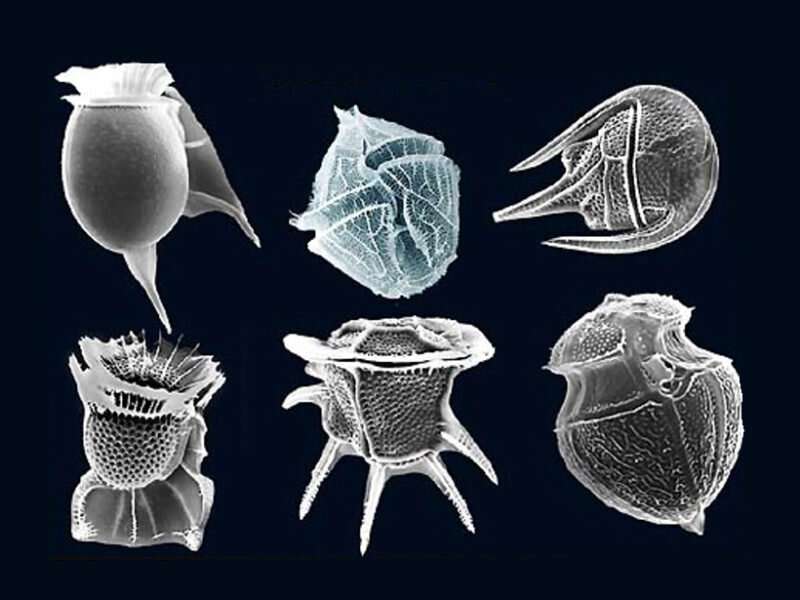The role of midsized phytoplankton in Earth's biological pump

Every spring, phytoplankton blooms flourish across the ocean. The single-celled, photosynthetic organisms pull carbon dioxide from the atmosphere and produce oxygen—part of a carbon sequestration system known as the biological pump.
Widely used numerical and satellite-based models assume that primary production and net community production (or the net amount of carbon removed from the atmosphere through the biological pump) are greatest in ecosystems dominated by plankton larger than 20 micrometers, known as microplankton, and lowest in those dominated by plankton smaller than 2 micrometers, known as picoplankton. However, the role of plankton in between those sizes, known as nanoplankton, has largely been ignored. Now Juranek et al. show that nanoplankton may play a more significant role than previously thought.
The team studied the relationship between size and productivity in a region of the North Pacific Transition Zone (NPTZ), a subtropical-subpolar, basin-sized feature characterized by strong physical, chemical, and ecological gradients. The team members conducted three transects of the NPTZ in the spring or early summer of 2016, 2017, and 2019, crossing a feature known as the transition zone chlorophyll front, where net community production rates were as much as five times higher than those south of the transition zone.
The authors used a combination of approaches to characterize the size and diversity of plankton ranging from 0.5 to 100 micrometers in diameter. These measurements were compared to productivity rates determined both by an incubation-based method and by tracking the ratio of dissolved oxygen to argon in the seawater, which is related to net organic carbon production.
These coordinated data streams revealed a strong and previously unidentified link between variation in net community production and the biomass of nanoplankton. With additional insights from modeling, the authors suggest that both bottom-up factors, such as nutrient supply, and top-down factors, like size-specific grazing by predators, contribute to the importance of nanoplankton in the transition zone.
Models that fail to account for these middle-sized plankton may underestimate primary production and the efficiency of the biological pump, the researchers say. Understanding the role of nanoplankton will be critical as scientists work to understand how climate change may affect the carbon cycle in the future.
More information: Lauren W. Juranek et al. The Importance of the Phytoplankton "Middle Class" to Ocean Net Community Production, Global Biogeochemical Cycles (2020). DOI: 10.1029/2020GB006702
Journal information: Global Biogeochemical Cycles
Provided by American Geophysical Union
This story is republished courtesy of Eos, hosted by the American Geophysical Union. Read the original story here.





















